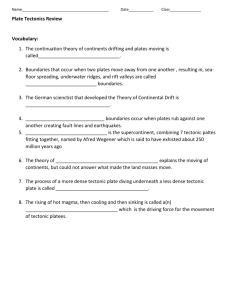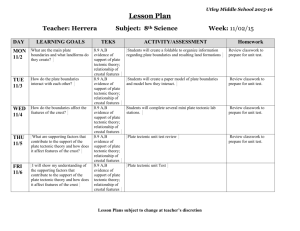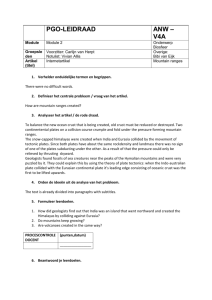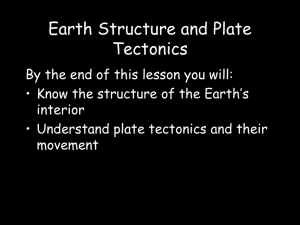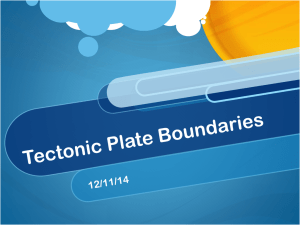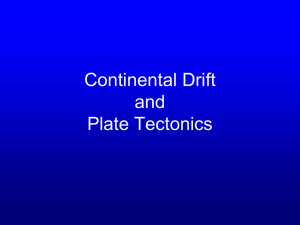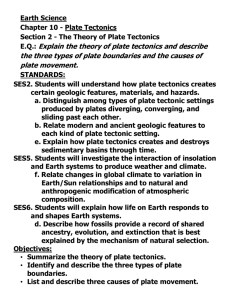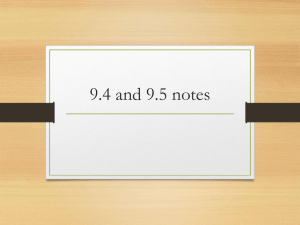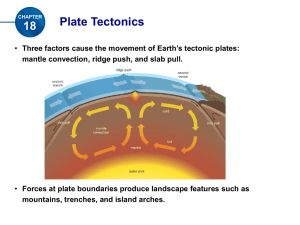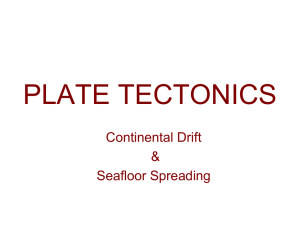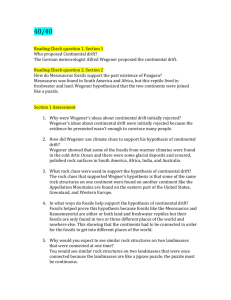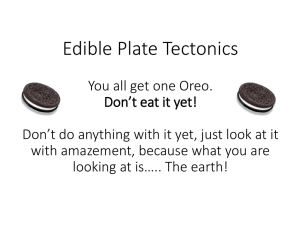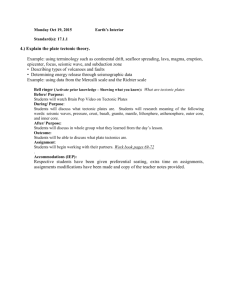Plate Tectonics 1
advertisement
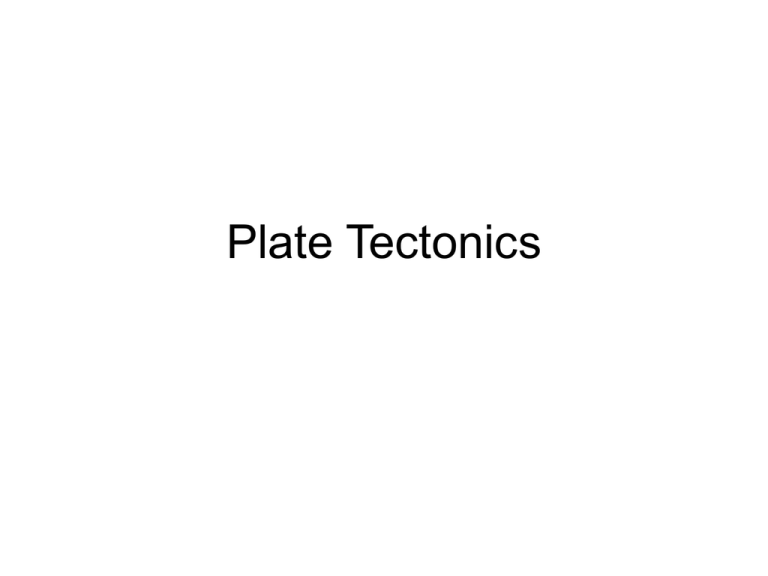
Plate Tectonics Objectives • To be able to describe the history and supporting evidence for plate tectonic theory • To be able to explain the basic principles of plate tectonic theory • To be able to describe & draw the 3 types of plate boundaries • To be able to describe features on Earth explained by plate tectonic theory Definition • from the Greek τέκτων; tektōn, meaning “builder” or “mason” The main features of plate tectonics are: • The Earth's surface is covered by a series of crustal plates. • The ocean floors are continually moving, spreading from the center, sinking at the edges, and being regenerated. • Convection currents beneath the plates move the crustal plates in different directions. • The source of heat driving the convection currents is radioactivity deep in the Earths mantle. History • Alfred Wegener first proposed concept of continental drift (1915) • Wegener said all continents were joined together in one landmass called Pangaea • He used circumstantial evidence (puzzle-like fit of continents, fossil data, similar rock types and ages, glacial striations) to support his theory • He proposed a “pole-fleeing force” to explain Pangaea’s drift away from the South Pole toward the equator and gravitational forces of the sun and moon to explain the westward drift of North America • His theory was rejected; he died in Greenland in 1930. His body is presumed to be buried under >300 feet of ice. Evidence Cited by Wegener History (cont.) • Post World War II – technological advances led to detailed mapping of the seafloor; ridges and trenches discovered • Age dating of oceanic crust showed seafloor rocks are youngest at the ridges and oldest toward the trenches • Paleomagnetic data showed a record of reversals preserved in the volcanic rocks of the seafloor • Seafloor spreading proposed in 1961-62 by Howard Hess and R. Dietz • Convection model proposed as mechanism explaining crustal motion; HEAT drives the system • Plate tectonic theory accepted by the late 1960’s Basic Principles • The lithosphere exists as separate and distinct plates (<10 major plates; up to a few dozen including microplates) • Plates ride on the fluid-like asthenosphere • Plate motions range from ~1-4 cm/yr (as fast as fingernails grow) to ~16 cm/yr (as fast as hair grows) Compositional vs. Mechanical Layering The Lithosphere and Earth’s Interior Oceanic crust Continental crust Average thickness 5-10 km 30-70 km Density 3.2 g/cm3 2.7 g/cm3 Rich in Fe, Mg Poor in Si, Al Rich in Si, Al Poor in Fe, Mg Composition Plate Tectonic Map Tectonic Plate Motions California Seismicity Types of Plate Boundaries • Divergent (AKA constructive; e.g. Salton Sea in Southern California) • Transform (e.g. San Andreas Fault) • Convergent (AKA destructive) – ocean-ocean (e.g. Mariana Islands) – ocean-continent (e.g. Pacific Northwest Cascadia Subduction Zone) – continent-continent (e.g. India-Asia) Divergent Transform Convergent Phenomena on Earth Explained by Plate Tectonic Theory • • • • • • • • • • Mountains Trenches Midocean Ridges Earthquakes Volcanoes Mineral/Ore Distribution Resource Distribution (i.e. geothermal, etc.) Island chains and arcs Faulting and Folding of Rocks Et Cetera… Summary • Alfred Wegener continental drift led to plate tectonics • Supporting evidence includes: puzzle-like fit of continents; fossil, rock, glacial, and paleomagnetic data; seafloor spreading • Driven by convection • Explains most geologic phenomena on Earth




